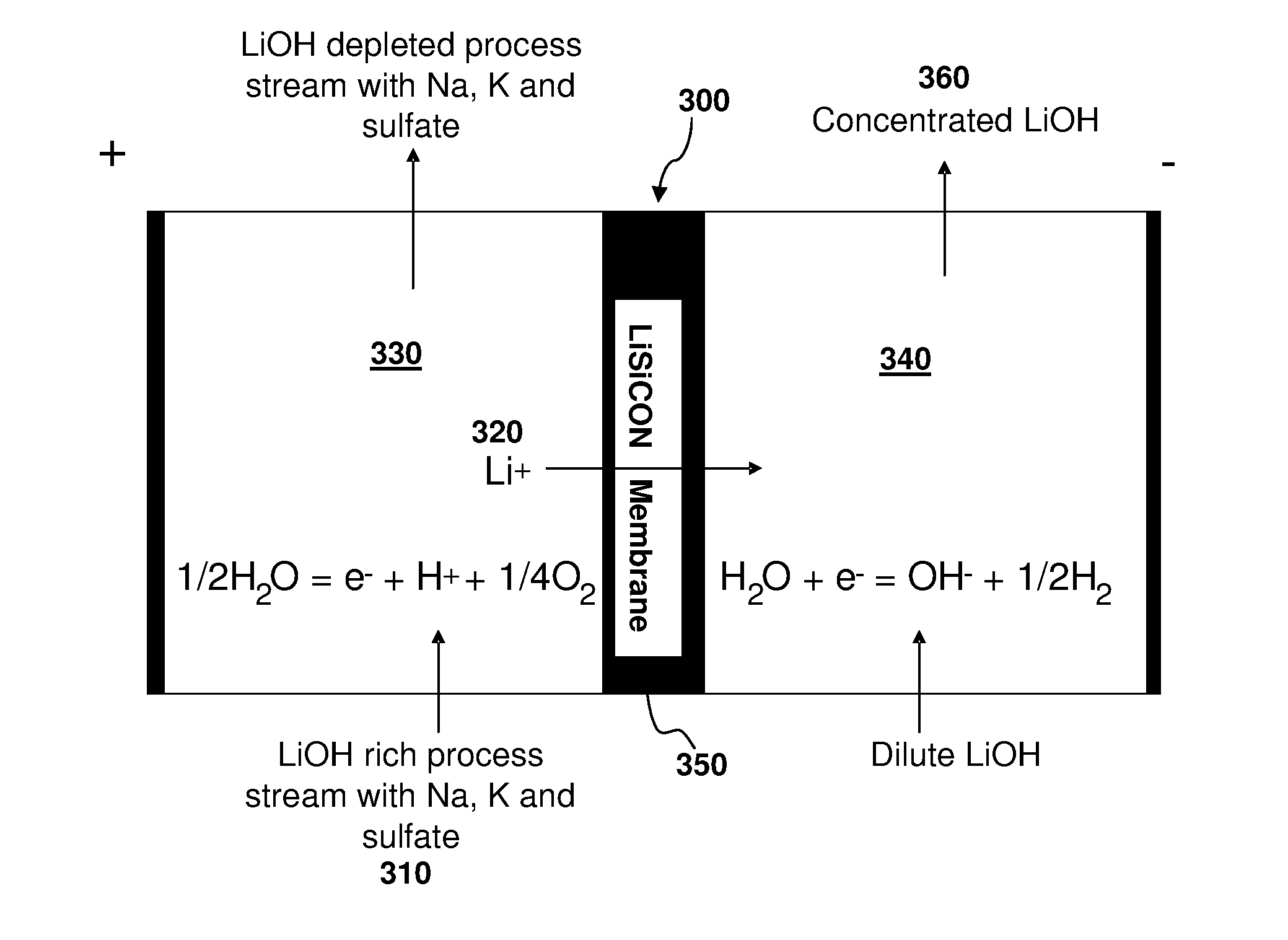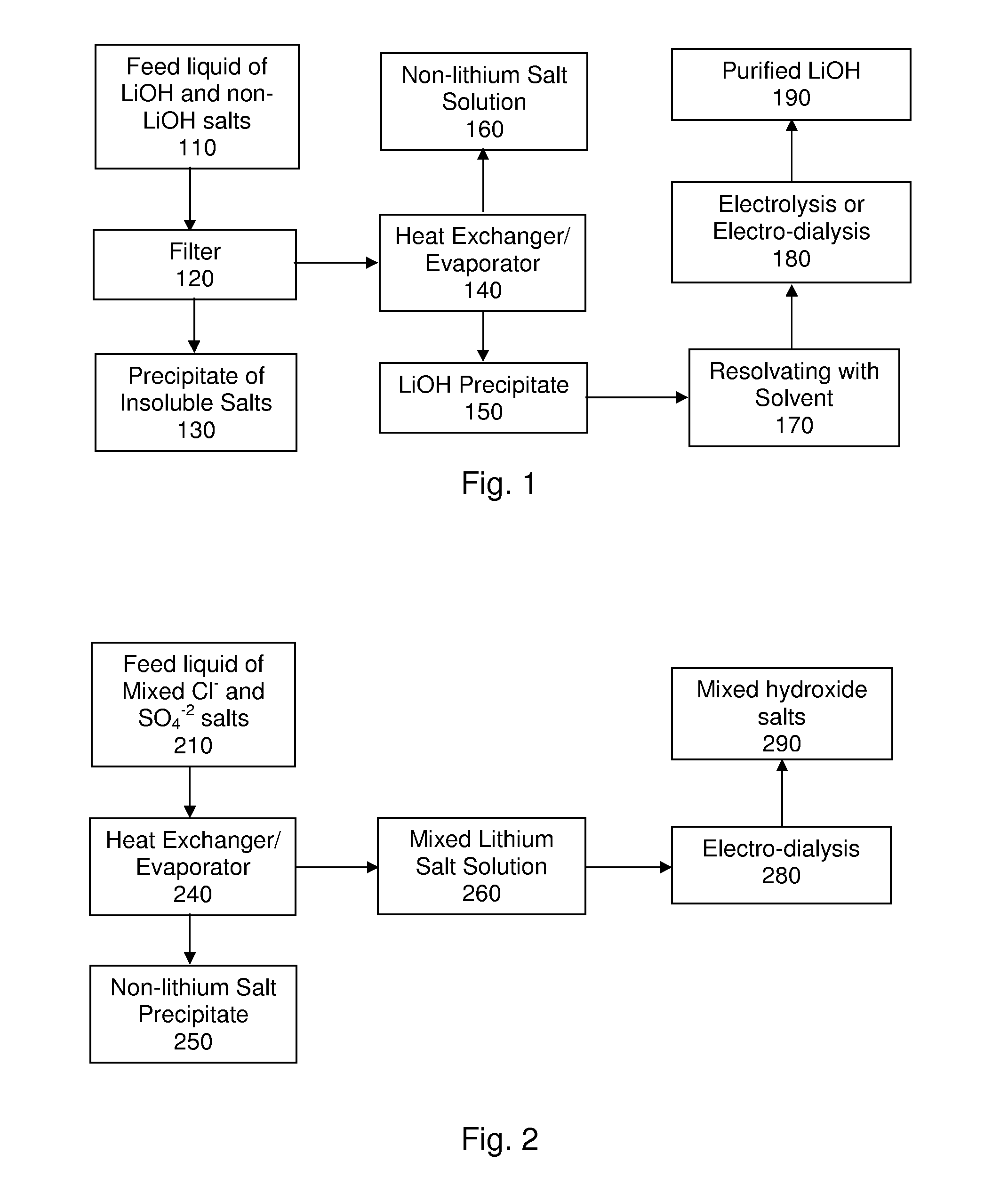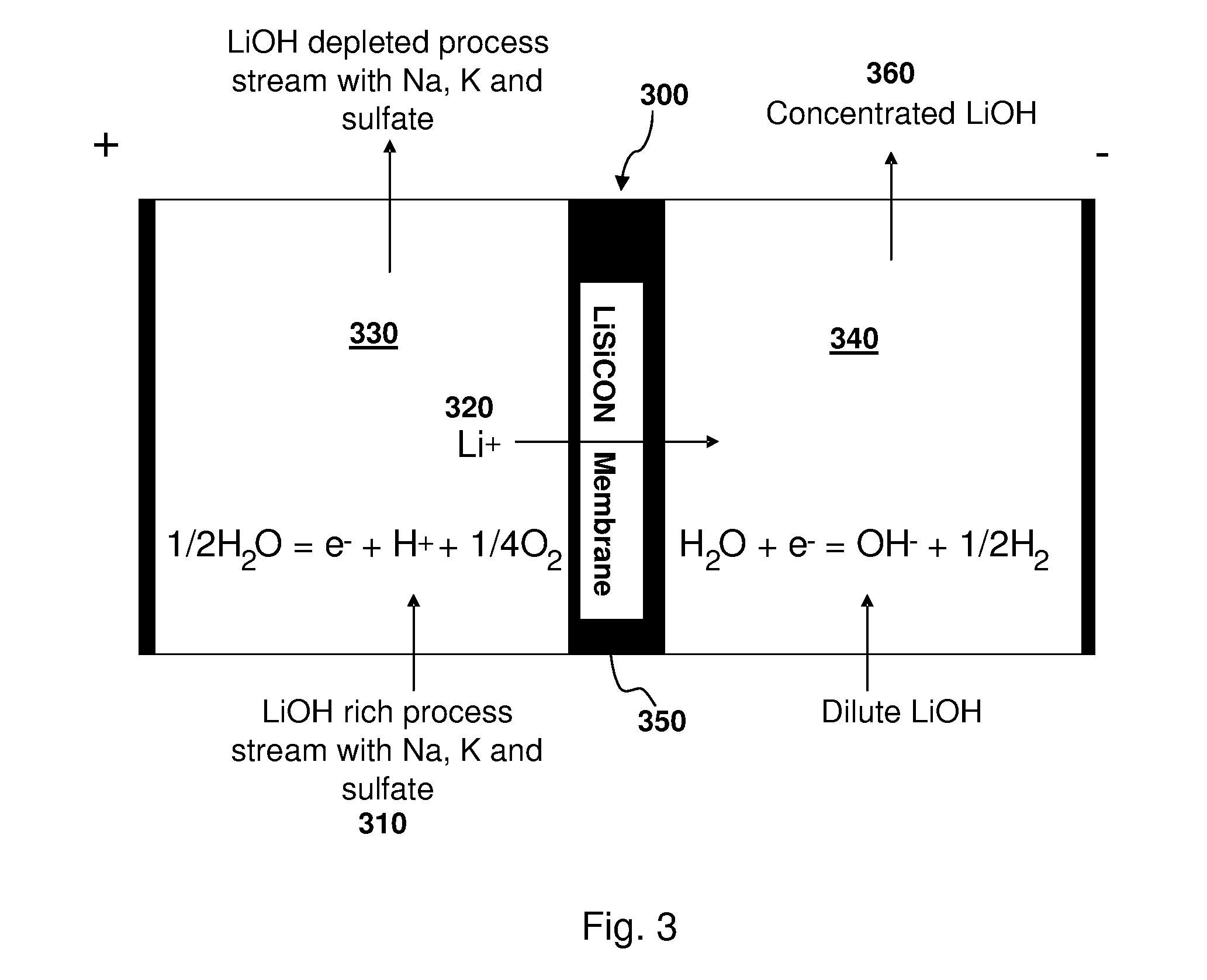Device and method for recovery or extraction of lithium
- Summary
- Abstract
- Description
- Claims
- Application Information
AI Technical Summary
Benefits of technology
Problems solved by technology
Method used
Image
Examples
example 1
[0053]A stream of process liquids containing about 4 M (mole per liter) to 5 M Li+, 0.05-0.15 M Na+, 0.03-0.12 M K+, 0.04-0.1 SO4−2, 4.71 M OH−, and there also was some Ca+2, Mg+2, and Al+3, was processed to separate LiOH with high yield and high purity. A two compartment electrolysis cell 300, such as shown in FIG. 3, was used to recover lithium from this process stream 310. FIG. 3 shows the principle of operation of a LiSICON two compartment cell. Lithium ions 320 are transferred from the anode (+) compartment 330 to the cathode (−) compartment 340 via the LiSICON 350 membrane. Pure LiOH 360 is recovered from the catholyte 340 compartment. The described LiSICON two compartment cell 300 was operated using the above process stream 310 as the anolyte solution. The electrolysis was conducted at 15 mA / cm2 of LiSICON membrane area. The cell was able to operate for only a short time (˜1 hr.) before the voltage started increasing, presumably due to influence of Na+ and K+ ions on the LiSI...
example 2
[0056]A schematic representation of several steps of this example is shown in FIG. 1. This example describes one possible process for recovering or extracting lithium from a feed stream containing mixture of lithium hydroxide and other non-lithium salts. Specifically, the feed stream contained about 10% LiOH, about 2-3 g / L Na+, about 2-3 g / L K+, and about 7 g / L SO4−2. First the feed stream is filtered to remove Ca, Mg, and Al oxides and hydroxides. The stream was heated to vaporize approximately 80-90% of the water resulting in the precipitation of about 80-90% of the lithium in the form of lithium hydroxide hydrate leaving sodium, potassium and most of the sulfate in solution. The amount of water to be evaporated can be decreased by the addition of alcohol to the aqueous solution. The solubility of lithium hydroxide decreases considerably in the presence of ethanol, producing a drowning-out crystallization as reported by Graber et al. in Cryst. Res. Technol. 43(6), pg. 616-625, 200...
example 3
[0057]The same process stream as in Example 2 was used. Lithium hydroxide hydrate was redissolved and fed into an electro-dialyzer as shown schematically in FIG. 7. The electro-dialyzer featured lithium conductive ceramic membranes and monovalent anion exchange membranes (Neosepta ACS). The resulting product from the cathode chamber was a stream of purified lithium hydroxide. Optionally, the anolyte stream was fed back into the vaporizer stream for additional lithium recovery. With the very low sodium and potassium content in the electrolyzer stream, the lithium conductive membrane was run with current run in reverse 1% of the time to purge sodium and potassium cations from the membrane.
[0058]In Examples 2 and 3 the starting feed stream was primarily alkaline and the lower solubility of lithium hydroxide hydrate was utilized to provide a pre-purification step upstream of the electrolyzer or electro-dialyzer. In the next example the starting feed stream is more neutral and primarily ...
PUM
| Property | Measurement | Unit |
|---|---|---|
| Volume | aaaaa | aaaaa |
| Volume | aaaaa | aaaaa |
| Volume | aaaaa | aaaaa |
Abstract
Description
Claims
Application Information
 Login to View More
Login to View More - R&D
- Intellectual Property
- Life Sciences
- Materials
- Tech Scout
- Unparalleled Data Quality
- Higher Quality Content
- 60% Fewer Hallucinations
Browse by: Latest US Patents, China's latest patents, Technical Efficacy Thesaurus, Application Domain, Technology Topic, Popular Technical Reports.
© 2025 PatSnap. All rights reserved.Legal|Privacy policy|Modern Slavery Act Transparency Statement|Sitemap|About US| Contact US: help@patsnap.com



